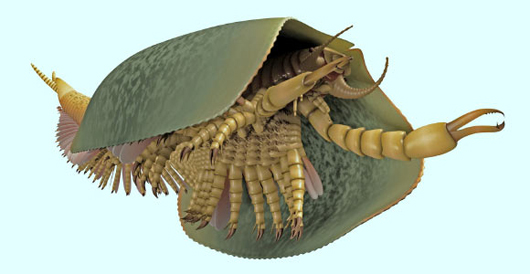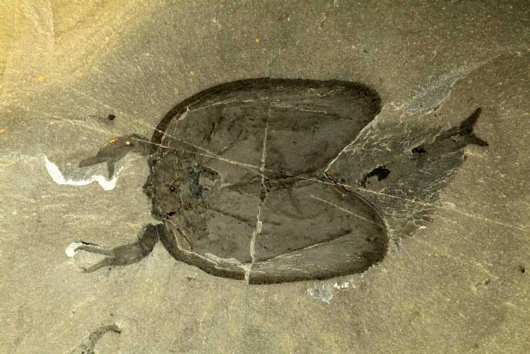Newly Described Canadian Fossil Sheds Light on the Origin of Mandibles
Fossils collected from the famous Burgess Shale deposits in British Columbia (Canada), have shed light on the origins of creepy-crawlies with mandibles (jaws), animals such as millipedes, centipedes, insects, crabs, shrimps and lobsters. Scientists from the Royal Ontario Museum and the University of Toronto have been studying several beautifully preserved fossils of a newly described Cambrian arthropod which has provided evidence of how this diverse group of animals evolved.
Burgess Shale Fossil
A Computer-Generated Image of the Newly Described Arthropod Tokummia katalepsis

A three-dimensional computer generated image of Tokummia katalepsis showing serrated pincers and the pair of mandibles.
Picture credit: Royal Ontario Museum
The fossils date from around 508 million-years-ago and reveal a multi-limbed creature that probably scuttled along the sea floor. It had a shell-like carapace and two delicate pincers that reminded the researchers of “can openers”.
Serrated Mandibles
Significantly, the fossils show that this ten-centimetre-long predator had a pair of broad, serrated mandibles. Scientists have concluded that the fossils represent a basal form of Mandibulata, a clade of the phylum Arthropoda that consists of millipedes, centipedes, crustaceans and insects. Mandibulates are united by having a pair of specialised jaws “mandibles”, which can be used for a variety of purposes such as hunting, biting, cutting food into smaller pieces, digging, carrying items and building nests.
One of the Fossils of the Newly Described Tokummia katalepsis
Picture credit: Royal Ontario Museum
For models and replicas of famous creatures from the fossil record: Everything Dinosaur – Learning.


